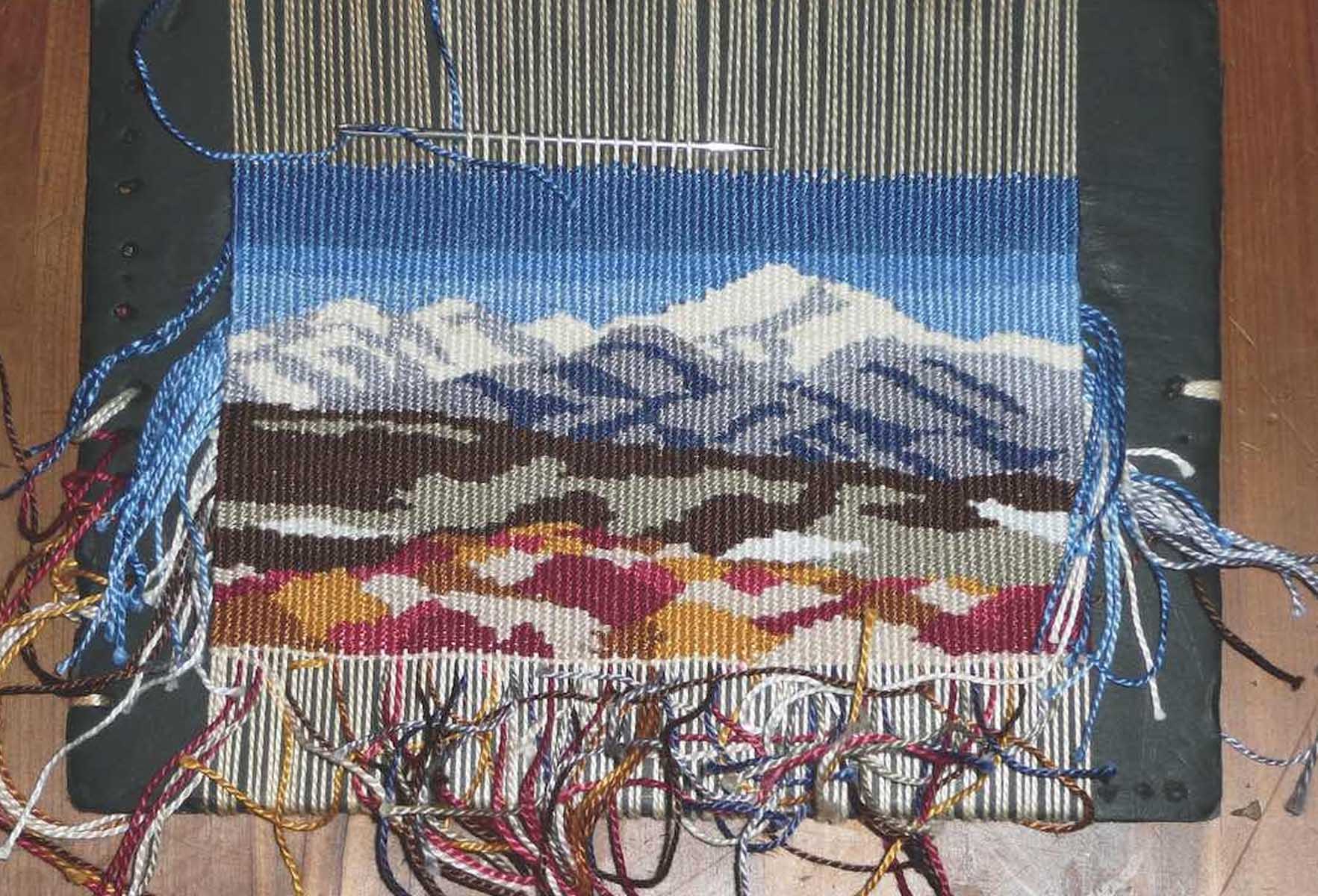
Tapestry weaving is an ancient and fascinating art form that has been practiced for centuries. It involves the meticulous creation of intricate designs and patterns using various threads on a loom. The process of tapestry weaving requires skill, patience, and attention to detail, resulting in stunning works of art that can be displayed on walls or used as decorative textiles.
In this article, we will explore 18 mind-blowing facts about tapestry weaving that highlight the rich history, techniques, and cultural significance of this craft. From its origins in ancient civilizations to its modern interpretations, tapestry weaving has continuously evolved, leaving a lasting legacy in the world of art and design. So let’s delve into the world of tapestry weaving and discover some fascinating insights that will leave you amazed at the intricacy and beauty of this timeless craft.
Key Takeaways:
- Tapestry weaving is a fascinating blend of art and storytelling, with roots dating back to ancient civilizations. It’s a slow, deliberate process that preserves cultural heritage and inspires creativity across the globe.
- From adorning royalty to modern artistic expression, tapestry weaving is a sustainable, therapeutic, and educational art form. Its intricate designs and rich history continue to captivate and inspire creative minds worldwide.
Ancient Origins
Tapestry weaving has a rich history that dates back thousands of years. It is believed to have originated in ancient Egypt and Mesopotamia, where it was used to decorate sacred temples and palaces.
Adorned Royalty
Tapestry weaving became an important art form during the Middle Ages, particularly in Europe. These intricate tapestries were often used to adorn the walls of castles and palaces, showcasing scenes from mythology, historical events, and noble families.
Blend of Art and Craft
Tapestry weaving is a unique blend of art and craft. It requires both technical skill and artistic vision to create intricate designs using colorful threads. The weaver must carefully plan each thread placement to achieve the desired pattern and texture.
Varied Techniques
Tapestry weaving encompasses a variety of techniques, including plain weave, slit weave, and dovetailing. These techniques allow the weaver to create different effects such as shading, texture, and three-dimensional elements.
Storytelling Medium
Tapestry weaving has long been used as a storytelling medium. Through intricate designs and symbols, tapestries convey narratives, myths, and cultural traditions, preserving history and passing down stories through generations.
Multicultural Influences
Tapestry weaving has been influenced by various cultures around the world. From the vibrant patterns of Persian rugs to the delicate tapestries of the Renaissance, each culture has contributed to the evolution and diversity of this art form.
Symbolism and Meaning
Tapestries often incorporate symbolism and hidden meanings. The choice of colors, motifs, and patterns can convey emotions, social status, or religious beliefs, adding depth and significance to the artwork.
Slow and Deliberate Process
Tapestry weaving is a slow and deliberate process. It requires a high level of patience and attention to detail. Each thread is carefully woven by hand, making it a time-consuming art form that demands dedication and precision.
Revival in the Modern Era
Tapestry weaving experienced a revival in the 20th century, with artists embracing the craft for its tactile and expressive qualities. Modern tapestries often push the boundaries of traditional techniques, incorporating new materials and innovative designs.
Contemporary Applications
While tapestry weaving has deep historical roots, it has also found its place in contemporary art and design. From large-scale installations to wearable art, tapestries continue to captivate audiences with their beauty and versatility.
Celebrated Artists
Many celebrated artists have explored tapestry weaving as a means of artistic expression. From the renowned painter Pablo Picasso to the textile artist Grayson Perry, these artists have pushed the boundaries of the medium, creating awe-inspiring tapestries that challenge perception and spark dialogue.
Preserving Cultural Heritage
Tapestry weaving plays a vital role in preserving cultural heritage. Many ancient tapestries have survived through the ages, providing valuable insights into the customs, traditions, and aesthetics of past civilizations.
Community and Collaboration
Tapestry weaving often involves a sense of community and collaboration. In some cultures, weaving is a communal activity where individuals come together to create large-scale tapestries, forging bonds and sharing their collective creativity.
Environmental Sustainability
Tapestry weaving is an environmentally sustainable art form. The use of natural fibers and dyes minimizes its ecological footprint, making it a viable choice for artists and artisans who prioritize eco-friendly practices.
Meditative and Therapeutic
The process of tapestry weaving can be meditative and therapeutic. The repetitive motion of weaving can help calm the mind and promote mindfulness, offering a peaceful escape from the bustling world.
Educational Value
Tapestry weaving holds educational value beyond its artistic merits. It teaches patience, focus, and problem-solving skills, nurturing the creative and analytical abilities of both novice and experienced weavers.
Artistic Legacy
Tapestry weaving leaves behind an artistic legacy that transcends time. Each tapestry embodies the collective effort, creativity, and storytelling heritage of the weaver, carrying their legacy forward for generations to come.
A Source of Inspiration
The intricate beauty and rich history of tapestry weaving continue to inspire artists, designers, and creative minds around the world. Its timeless allure and ability to tell stories through threads make it a truly captivating art form.
Conclusion
In conclusion, tapestry weaving is a fascinating and ancient art form that has captivated people for centuries. From its historical significance to its intricate patterns and designs, tapestry weaving offers a unique way to express creativity and tell stories through fabric.We have explored 18 mind-blowing facts about tapestry weaving, shedding light on its rich cultural heritage and technical complexities. From the ancient civilizations of Egypt and China to the medieval European tapestries, each piece embodies the creativity, skill, and dedication of its weaver.Not only is tapestry weaving a form of artistic expression, but it also serves as a valuable historical record of important events and cultural traditions. The level of detail and craftsmanship displayed in these woven masterpieces is truly awe-inspiring.Whether you are a budding tapestry weaver or simply appreciate the beauty and artistry of tapestries, delving into the world of tapestry weaving offers a deep appreciation for the creativity, patience, and skill required to create these stunning works of art.
FAQs
Q: How long does it take to weave a tapestry?
A: The time it takes to weave a tapestry can vary greatly depending on the size, complexity, and skill level of the weaver. Smaller tapestries can take a few weeks to a couple of months, while larger or more intricate pieces can take several months or even years to complete.
Q: What materials are used in tapestry weaving?
A: Traditional tapestry weaving uses yarn or thread made from various natural fibers such as wool, silk, and cotton. Today, contemporary weavers also experiment with synthetic fibers and incorporate unconventional materials like wire, beads, and feathers to add texture and visual interest to their tapestries.
Q: Can anyone learn tapestry weaving?
A: Yes, anyone can learn tapestry weaving with dedication, practice, and the right resources. There are numerous workshops, classes, and online tutorials available for beginners to start their tapestry weaving journey. It’s a craft that can be enjoyed by people of all ages and skill levels.
Q: Can tapestries be used for practical purposes?
A: While tapestries are primarily seen as decorative art, they can also serve practical purposes. Thick tapestries can provide insulation and soundproofing, making them ideal for wall hangings in noisy or drafty spaces. They can also be used as rugs or throws to add warmth and beauty to a room.
Q: How do I care for a tapestry?
A: To maintain the beauty and longevity of a tapestry, it is important to handle it with care. Regular dusting with a soft brush or vacuuming with a brush attachment can help remove dirt and debris. Avoid hanging tapestries in direct sunlight to prevent fading, and consider professional cleaning if necessary.
Was this page helpful?
Our commitment to delivering trustworthy and engaging content is at the heart of what we do. Each fact on our site is contributed by real users like you, bringing a wealth of diverse insights and information. To ensure the highest standards of accuracy and reliability, our dedicated editors meticulously review each submission. This process guarantees that the facts we share are not only fascinating but also credible. Trust in our commitment to quality and authenticity as you explore and learn with us.


